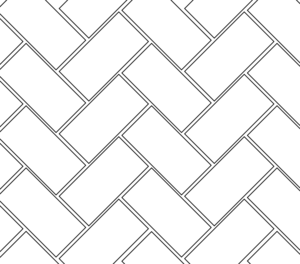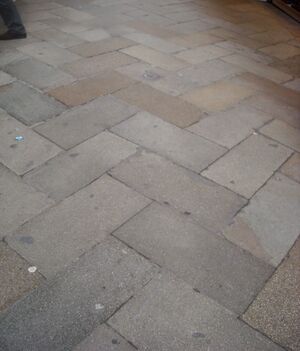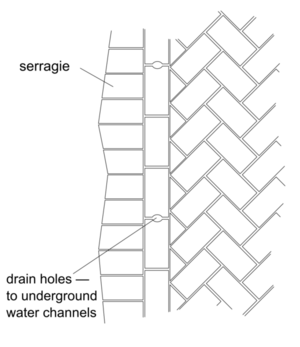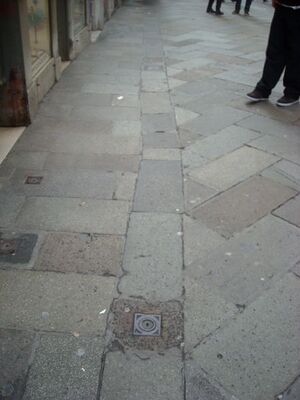Herring Bone (''Spina di Pesce''): Difference between revisions
Created page with "left|thumb|Herring bone pavement style right|thumb|Herring bone pavement style The Herring bone pavement layout, known in ..." |
No edit summary |
||
| Line 18: | Line 18: | ||
[[File:Boundaries--herringbone.png|right|thumb|boundary for the herring bone pavement style]] | [[File:Boundaries--herringbone.png|right|thumb|boundary for the herring bone pavement style]] | ||
[[File:herringboneboundary.jpg|left|thumb|Herring bone boundary]] | [[File:herringboneboundary.jpg|left|thumb|Herring bone boundary]] | ||
At the border of any herring bone pavement is a [[On the Run|run]] of large ''[[salizzone]]'' stones. Because the stones used in the herring bone design are all the same size, they match up evenly with the straight run of stones along the border. Along this [[On the Run|run]] there are drains for rainwater every 3 stones; Underneath the stones is a '' | At the border of any herring bone pavement is a [[On the Run|run]] of large ''[[salizzone]]'' stones. Because the stones used in the herring bone design are all the same size, they match up evenly with the straight run of stones along the border. Along this [[On the Run|run]] there are drains for rainwater every 3 stones; Underneath the stones is a ''gatoli'', which transports the rainwater underneath the pavement and empties it into the canals. | ||
{{-}} | {{-}} | ||
Revision as of 17:56, 6 December 2012


The Herring bone pavement layout, known in Italian as Spina di Pesce,aligns paving stones in a way that resembles the spine of a fish. Every stone in the "herringbone" layout has to be the same size, with the length of the stone being twice the width.[1] This technique is always done with Salizzone which meet the previously stated requirement.
Boundaries


At the border of any herring bone pavement is a run of large salizzone stones. Because the stones used in the herring bone design are all the same size, they match up evenly with the straight run of stones along the border. Along this run there are drains for rainwater every 3 stones; Underneath the stones is a gatoli, which transports the rainwater underneath the pavement and empties it into the canals.
See Also
References
- ↑ Ing. Lorenzo Bottazzo, November 3rd 2011
Bibliography
NULL